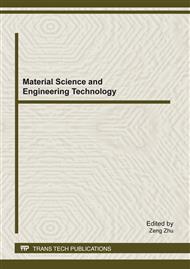p.603
p.609
p.619
p.624
p.631
p.635
p.641
p.647
p.652
Remote Sensing Monitoring Model and Method of Methane Emission in Coal Mine Area
Abstract:
Currently, there lacks real-time, effective, and highly sensitive means to monitor and control Methane emissions in coalmining region. And the related principles, methods and technology are not complete yet. With regards to this point, the technology of remote sensing to monitor the circumstance in coalmining region is expected to have some advantages which other technology can not match. This paper takes the region of southern of Qinshui basin in Shanxi province as the key research object. Then, the best band is chosen to monitor the methane based on the basic theory of remote sensing, such that the theory model of spectral response of methane can be developed completely. Meanwhile the hyper spectral remote sensing model for monitoring the concentrations of methane in coalmining region is developed also, and is used to analyze the discipline of time-space distribution of the methane in coalmining region preliminary to provide the condition for study the highly sensitive method of monitor atmospheric environment of coalmining region in real time.
Info:
Periodical:
Pages:
631-634
Citation:
Online since:
February 2012
Authors:
Price:
Сopyright:
© 2012 Trans Tech Publications Ltd. All Rights Reserved
Share:
Citation:


